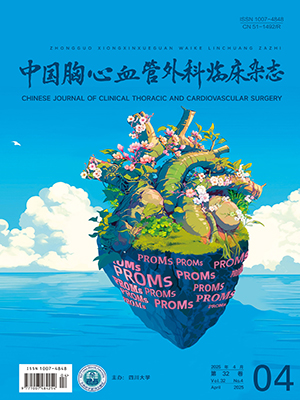| 1. |
Hirschfeld SS, Rudner C, Nash CL, et al. Incidence of mitral valve prolapse in adolescent scoliosis and thoracic hypokyphosis. Pediatrics, 1982, 70(3): 451-454.
|
| 2. |
Bozcali E, Ucpunar H, Sevencan A, et al. A retrospective study of congenital cardiac abnormality associated with scoliosis. Asian Spine J, 2016, 10(2): 226-230.
|
| 3. |
Disse S, Abergel E, Berrebi A, et al. Mapping of a first locus for autosomal dominant myxomatous mitral-valve prolapse to chromosome 16p11.2-p12.1. Am J Hum Genet, 1999, 65(5): 1242-1251.
|
| 4. |
Hayek E, Gring CN, Griffin BP. Mitral valve prolapse. Lancet, 2005, 365(9458): 507-518.
|
| 5. |
Procacci PM, Savran SV, Schreiter SL, et al. Prevalence of clinical mitral-valve prolapse in 1169 young women. N Engl J Med, 1976, 294(20): 1086-1088.
|
| 6. |
Fornes P, Heudes D, Fuzellier JF, et al. Correlation between clinical and histologic patterns of degenerative mitral valve insufficiency: A histomorphometric study of 130 excised segments. Cardiovasc Pathol, 1999, 8(2): 81-92.
|
| 7. |
Arfken CL, Schulman P, McLaren MJ, et al. Mitral valve prolapse and body habitus in children. Pediatr Cardiol, 1993, 14(1): 33-36.
|
| 8. |
Zema MJ, Chiaramida S, DeFilipp GJ, et al. Somatotype and idiopathic mitral valve prolapse. Cathet Cardiovasc Diagn, 1982, 8(2): 105-111.
|
| 9. |
Braunberger E, Deloche A, Berrebi A, et al. Very long-term results (more than 20 years) of valve repair with Carpentier's techniques in nonrheumatic mitral valve insufficiency. Circulation, 2001, 104(12 Suppl 1): Ⅰ8-Ⅰ11.
|
| 10. |
David TE, Ivanov J, Armstrong S, et al. Late outcomes of mitral valve repair for floppy valves: Implications for asymptomatic patients. J Thorac Cardiovasc Surg, 2003, 125(5): 1143-1152.
|
| 11. |
Gokhale SG, Gokhale S. High prevalence of 'mitral valve prolapse syndrome' (MVPS) among older children and adolescents in a contained population. Int J Cardiol, 2013, 168(4): 4307-4308.
|
| 12. |
Perloff JK, Child JS. Clinical and epidemiologic issues in mitral valve prolapse: Overview and perspective. Am Heart J, 1987, 113(5): 1324-1332.
|
| 13. |
Gillinov AM, Cosgrove DM, Blackstone EH, et al. Durability of mitral valve repair for degenerative disease. J Thorac Cardiovasc Surg, 1998, 116(5): 734-743.
|
| 14. |
Suri RM, Schaff HV, Dearani JA, et al. Survival advantage and improved durability of mitral repair for leaflet prolapse subsets in the current era. Ann Thorac Surg, 2006, 82(3): 819-826.
|
| 15. |
Smedira NG, Selman R, Cosgrove DM, et al. Repair of anterior leaflet prolapse: Chordal transfer is superior to chordal shortening. J Thorac Cardiovasc Surg, 1996, 112(2): 287-291.
|




